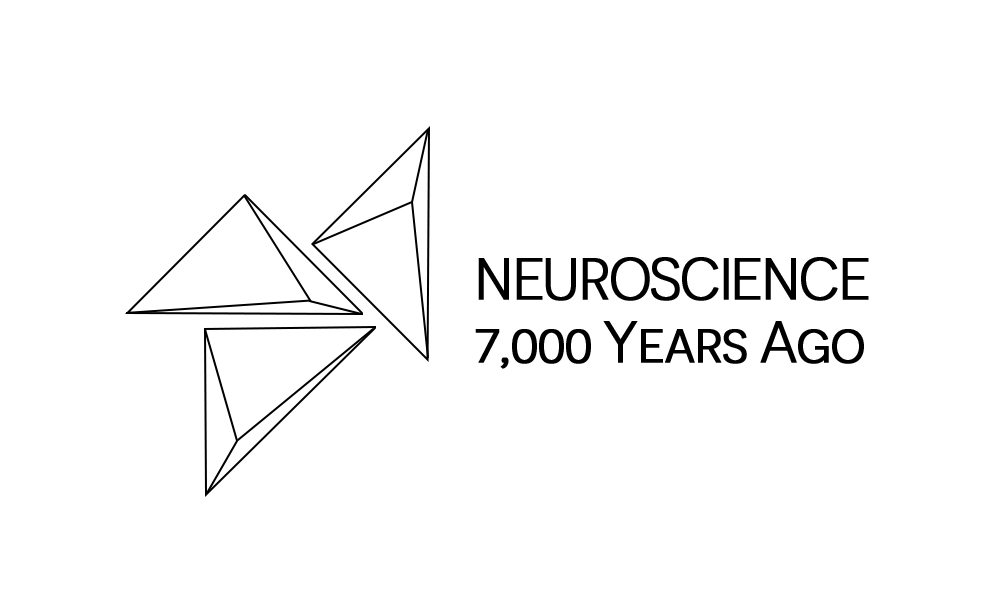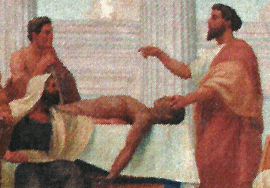
Anatomists or Butchers?
In the Corpus Hippocraticum, there is no evidence of human autopsies being conducted. The Greeks of this period believed that the human soul would not find peace until the body was put to rest. They also thought that destruction awaited those who tampered with a body. Thus, it was important to bury the dead quickly and with proper respect.
Systematic human dissections began after Hippocrates died in 377 B.C. They emerged during the Hellenistic Era, the period associated with Alexander the Great. Studies in Alexandria fell into four groups: literature, mathematics, astronomy, and medicine.
Most Greeks no longer believed that the future of the immortal soul was tied to the condition of the body. The body was now perceived as only a temporary abode or shelter for the soul. As a result, inquisitive scholars wanting to dissect human bodies no longer feared doing so [1].
Alexandria was the ideal place to learn about anatomy and physiology during the Hellenistic period. Although the practice of human dissection would have been decried by the priesthood throughout the rest of Egypt and also by the vocal citizens of Athens, the situation was very different in this well-insulated, distant center of learning.
The leading Alexandrian dissector was an anatomist named Herophilus of Chalcedon, who practiced around 300 B.C. He reportedly dissected hundreds of cadavers [2]. Erasistratus, a slightly younger scientist, also participated in human autopsies [3]. By dissecting dead humans, both men brought forth a new approach to medicine, one that went well beyond what the Hippocratic physicians were willing to do during the Golden Age of Greece.
Nevertheless, it has been alleged that Herophilus and Erasistratus (Figure 1), did more than simply dissect the bodies of dead people. The condemned criminals to them for vivisection, hoping the physicians could learn new facts about the body. The Greek rulers of Egypt, it was said, did everything possible to help make Alexandria’s physicians the envy of the world [4].
Celsus, the Roman encyclopedist who lived in the first century A.D., wrote about anatomy in Alexandria four centuries earlier.31 He said the following about Herophilus and Erasistratus:
“They hold that Herophilus and Erasistratus did this in the best way by far, when they laid open men whilst alive—criminals received out of prison from the kings—and whilst these were still breathing, observed parts which beforehand nature had concealed.”
Celsus presented arguments both for and against vivisection, but in the end concluded that human vivisection was cruel and unnecessary. To Celsus, even the practice of dissecting the dead was repulsive.
Tertullian, another Roman, did not mince words when it came to vivisection, calling Herophilus a butcher.

None of the original writings of Herophilus and Erasistratus has survived into the present. Consequently, the claims made by Celsus and Tertullian cannot be verified. In addition, some scholars have pointed out that Galen said nothing about human vivisection during the Hellenistic period, although he repeatedly referred to the discoveries of Herophilus and Erasistratus. In part because Galen was not one to remain silent on any issue, the naysayers contend that the two Alexandrians were only given the bodies of recently executed criminals to dissect and were being “framed” by jealous adversaries in other locations.
References:
1 Finger, S.: ‘Minds behind the brain: A history of the pioneers and their discoveries’ (Oxford University Press, 2004. 2004)
2 Dobson, J.F.: ‘Herophilus of alexandria’, Proceedings of the Royal Society of Medicine, 1925, 18, (Sect_Hist_Med), pp. 19-32
3 Dobson, J.F.: ‘Erasistratus’, in Editor (Ed.)^(Eds.): ‘Book Erasistratus’ (SAGE Publications, 1927, edn.), pp.
4 Finger, S.: ‘Origins of neuroscience: a history of explorations into brain function’ (Oxford University Press, USA, 2001. 2001)
1 Dobson, J.F.: ‘Herophilus of alexandria’, Proceedings of the Royal Society of Medicine, 1925, 18, (Sect_Hist_Med), pp. 19-32
2 Dobson, J.F.: ‘Erasistratus’, in Editor (Ed.)^(Eds.): ‘Book Erasistratus’ (SAGE Publications, 1927, edn.), pp.
3 Finger, S.: ‘Origins of neuroscience: a history of explorations into brain function’ (Oxford University Press, USA, 2001. 2001)
1 Dobson, J.F.: ‘Herophilus of alexandria’, Proceedings of the Royal Society of Medicine, 1925, 18, (Sect_Hist_Med), pp. 19-32
2 Dobson, J.F.: ‘Erasistratus’, in Editor (Ed.)^(Eds.): ‘Book Erasistratus’ (SAGE Publications, 1927, edn.), pp.








